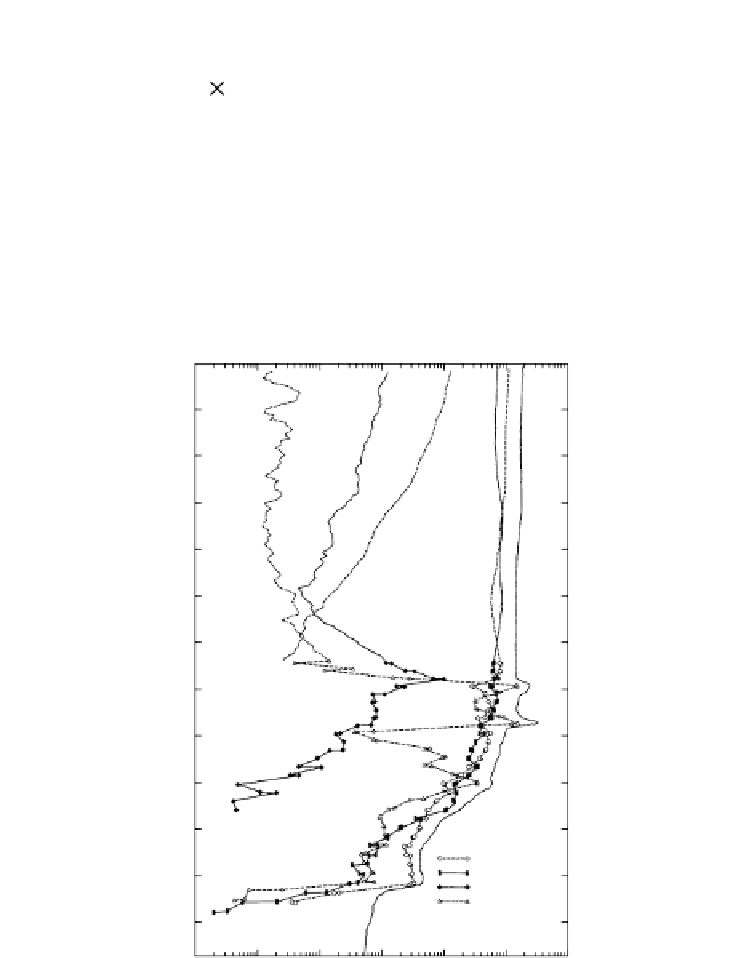Geoscience Reference
In-Depth Information
Westward wind
Ion
Velocity
B
Plasma density increases
Ion
Velocity
Eastward wind
Figure 6.9b
Illustration of the wind shear mechanism that operates at E-region and lower
F-region heights. The angle
κ
i
and
I
. [After Hines (1974). Reproduced
with permission of the American Geophysical Union.]
θ
depends upon
1 3 5
M
1
N
2
1
, ( S i
1
)
O
1
S
n
e
1 3 0
O
2
1
1 2 5
1 2 0
1 1 5
N O
1
S i
1
1 1 0
1 8 . 1 0 0 6 U p l e g
1 2 . A u g . 1 9 7 6
W a l l o p s I s l a n d
x
: 2 8 . 1
8
1 0 5
1 0 0
9 5
9 0
N O
1
O
2
1
8 5
S i
1
,
N
2
1
S u m m e t a l
i o n s (
S i
1
)
8 0
1 0
0
1 0
1
1 0
2
1 0
3
1 0
4
1 0
5
1 0
6
D e n s i t y ( c m
2
3
)
Figure 6.9c
Electron and ion density profiles from a rocket flight. Below 108 km the
individual ion measurements are shown. Above this altitude the curves represent running
averages from four consecutive mass spectrometer sweeps. Localized peaks in the electron
density profile are associated with metallic ions and are responsible for the daytime tidal
ion layers plotted in Fig. 5.23c. (Courtesy of L. Smith.)





























































































Search WWH ::

Custom Search